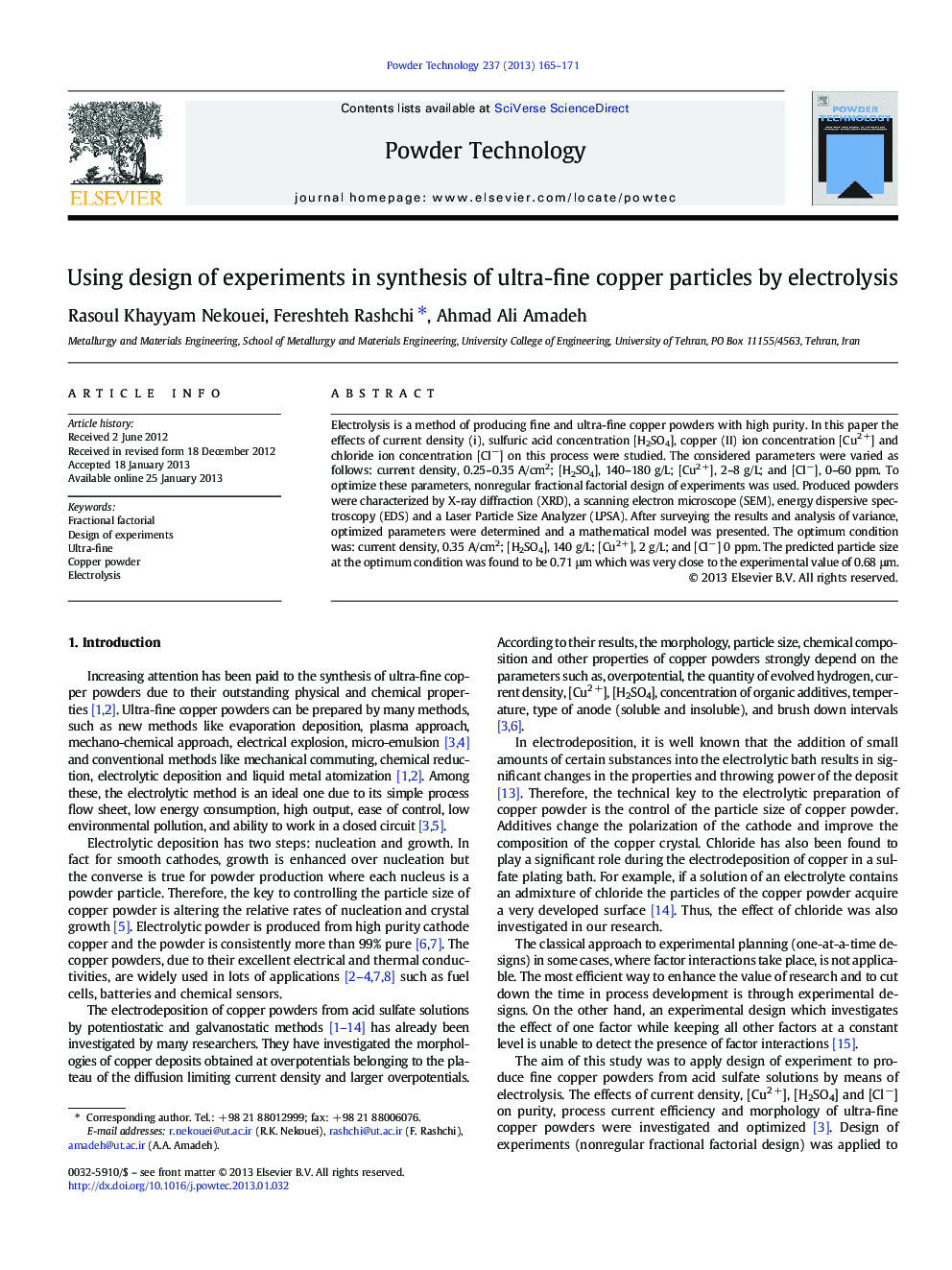| Article ID | Journal | Published Year | Pages | File Type |
|---|---|---|---|---|
| 236831 | Powder Technology | 2013 | 7 Pages |
Electrolysis is a method of producing fine and ultra-fine copper powders with high purity. In this paper the effects of current density (i), sulfuric acid concentration [H2SO4], copper (II) ion concentration [Cu2 +] and chloride ion concentration [Cl−] on this process were studied. The considered parameters were varied as follows: current density, 0.25–0.35 A/cm2; [H2SO4], 140–180 g/L; [Cu2 +], 2–8 g/L; and [Cl−], 0–60 ppm. To optimize these parameters, nonregular fractional factorial design of experiments was used. Produced powders were characterized by X-ray diffraction (XRD), a scanning electron microscope (SEM), energy dispersive spectroscopy (EDS) and a Laser Particle Size Analyzer (LPSA). After surveying the results and analysis of variance, optimized parameters were determined and a mathematical model was presented. The optimum condition was: current density, 0.35 A/cm2; [H2SO4], 140 g/L; [Cu2 +], 2 g/L; and [Cl−] 0 ppm. The predicted particle size at the optimum condition was found to be 0.71 μm which was very close to the experimental value of 0.68 μm.
Graphical abstractTo optimize electrolysis parameters (current density, [H2SO4], [Cu2+] and [Cl−]), nonregular fractional factorial design of experiments was used. The optimum condition was: current density, 0.35 A/cm2; [H2SO4], 140 g/L; [Cu2+], 2 g/L; and [Cl−] 0 ppm. The predicted particle size at the optimum condition (0.71 µm) was very close to the experimental value of 0.68 µm.Figure optionsDownload full-size imageDownload as PowerPoint slideHighlights► [H2SO4], [Cu2 +], [Cl−] and current density were studied by electrolysis. ► Nonregular fractional factorial design of experiments was used. ► Optimization of particle size parameters was performed. ►The size of copper particles produced was about 700 nm.
